Chicken Wire Stages And Coolness – The Mythology Of Grit In American Bar Stages
Chicken Wire Stages
The image of a blues band performing behind chicken wire in a smoky American bar is more than a cinematic trope—it is a symbol of resilience, confrontation, and cultural fusion. These Chicken Wire Stages, often found in honky-tonks and roadhouses, were not just places of entertainment but battlegrounds of identity and sound. The chicken wire barrier, strung across the front of the stage, was a practical defense against flying bottles and a metaphorical shield against audience hostility. While not widespread in reality, they did exist and, the setup became legendary through films, oral histories, and the mythology of American music. It represented the tension between performer and patron, where music had to earn its place in a volatile environment. These venues were raw, loud, and unpredictable, demanding courage and charisma from those who stepped into the spotlight. The chicken wire stage became a rite of passage for musicians navigating the rougher edges of the live circuit. It also symbolized the intersection of blues, country, and rockabilly—genres born from struggle and storytelling.
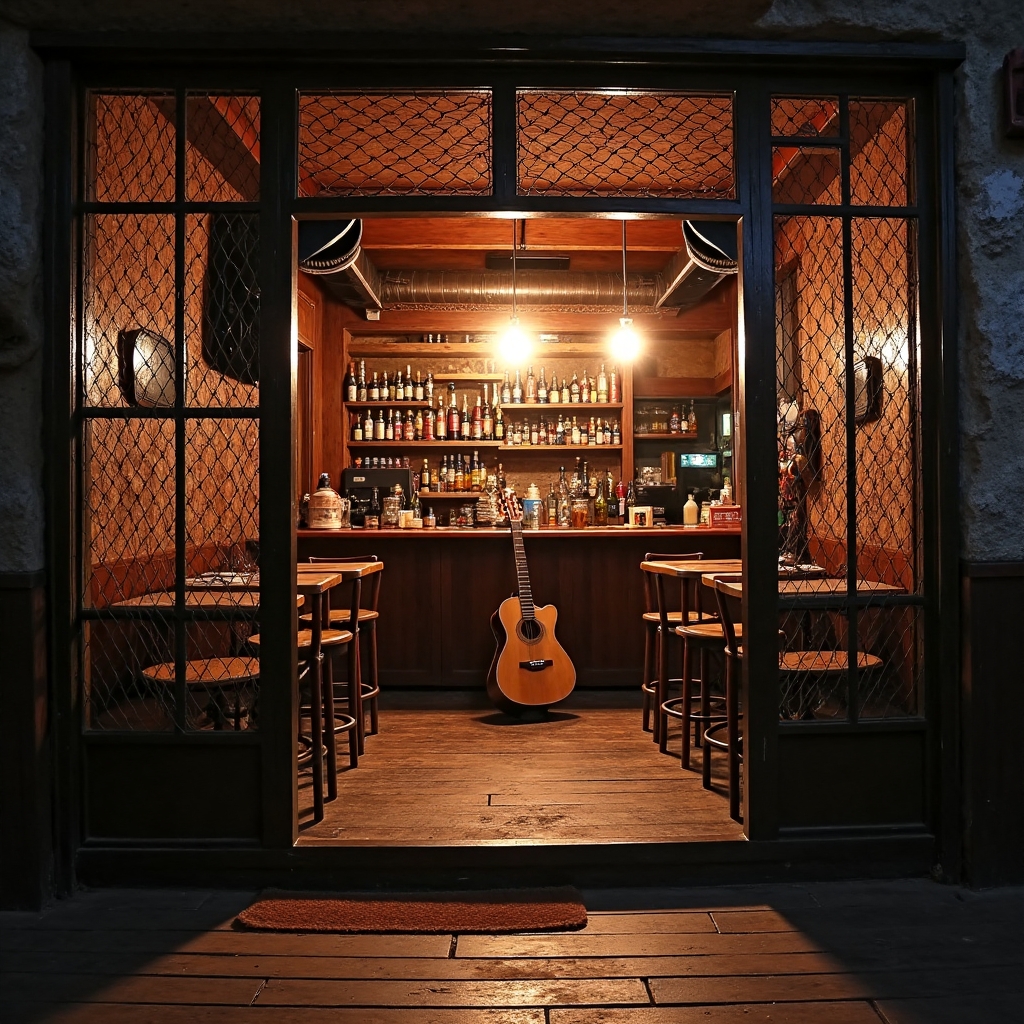
Honky-Tonks And Roadhouses – The Geography Of Grit
Honky-tonks and roadhouses were the spiritual homes of chicken wire stages, scattered across the American South and Midwest. These venues were often located on the outskirts of towns or along highways, catering to truckers, laborers, and locals seeking escape. The architecture was simple and functional—wooden floors, neon beer signs, and a stage barely raised above the crowd. Music in these spaces was loud, emotional, and deeply rooted in working-class experience. Blues, country, and rockabilly dominated the soundscape, each genre carrying its own stories of hardship and hope. In the roughest bars, chicken wire was installed to protect musicians from projectiles hurled by intoxicated or dissatisfied patrons. This physical barrier became a symbol of the volatile relationship between performer and audience. It also reflected the rawness of the environment, where music was not background noise but a test of endurance and charisma. These venues were not polished or polite—they were alive with tension, sweat, and sound. The chicken wire stage was both a shield and a spotlight, demanding presence and grit.
| Feature | Description |
|---|---|
| Venue Type | Honky-tonks and roadhouses |
| Common Locations | Southern and Midwestern United States |
| Music Genres | Blues, country, rockabilly |
| Audience | Working-class patrons, truckers, locals |
| Architecture | Simple, often wooden, with low stages and neon signage |
| Chicken Wire Purpose | Protection from thrown bottles and objects |
| Atmosphere | Loud, gritty, emotionally charged |
| Performer Role | Entertainer, survivor, cultural translator |
| Cultural Roots | African American blues, Appalachian folk, Southern storytelling |
| Legacy | Mythologized in film, music, and oral history |
The Blues Brothers Effect – Pop Culture And The Chicken Wire Myth
The 1980 film The Blues Brothers was one of the main pop culture moments thatcemented the chicken wire stage in the imagination, even though the setup was maybe never as widespread as the movie suggested. In the film, Jake and Elwood perform “Rawhide” behind a chicken wire barrier while dodging beer bottles from a hostile country-western crowd. This scene became iconic, blending comedy with a deeper commentary on genre conflict and audience expectation. The chicken wire here is both a gag and a metaphor—it protects the performers while highlighting the absurdity of their situation. The film exaggerated a real phenomenon, drawing from stories of rough bars where musicians had to earn their keep under threat. This cinematic moment gave the chicken wire stage a second life, transforming it into a symbol of musical defiance and cultural crossover. It also introduced the trope to a global audience, many of whom had never encountered such venues in real life. The scene’s humor masked a deeper truth about the risks musicians faced in certain environments. It also underscored the tension between blues and country, Black and white, urban and rural. The Blues Brothers didn’t invent the chicken wire stage, but they made it unforgettable.
- The chicken wire scene in The Blues Brothers is based on real stories from Southern bars.
- It popularized the idea of musicians needing physical protection from hostile crowds.
- The film used humor to explore deeper themes of genre tension and cultural misunderstanding.
- The scene became a cultural shorthand for “tough gig” in music and comedy circles.
- Many viewers assumed chicken wire stages were common, though they were relatively rare.
- The trope has since appeared in other films, music videos, and stage performances.
- It reflects the idea that performance is sometimes an act of survival.
- The scene is interesting as it also highlights the audience angry entitlement and performer vulnerability.
- The Blues Brothers’ performance of “Rawhide” became a cult classic moment.
- The chicken wire stage became a symbol of coolness under pressure.
Audience As Adversary – The Performer’s Trial By Fire
Performing behind chicken wire was not just about safety—it was about confronting an audience that could turn hostile at any moment. In many of these bars, the crowd was not passive but reactive, vocal, and sometimes violent. Musicians had to read the room, adapt their setlist, and win over patrons who might throw bottles if displeased. This dynamic created a high-stakes environment where performance was a test of nerve and adaptability. The chicken wire became a visual cue that the space was unpredictable, that the performer was stepping into a contested zone. It also reinforced the idea that music was not just entertainment but negotiation. The audience held power, and the performer had to earn their respect, sometimes under literal fire. This adversarial relationship shaped the way musicians approached their craft in these venues. It demanded charisma, resilience, and a willingness to engage with discomfort. The chicken wire was not just a barrier—it was a crucible.
| Element | Description |
|---|---|
| Audience Behavior | Reactive, vocal, sometimes aggressive |
| Performer Strategy | Adapt setlist, read room, maintain control |
| Symbolic Meaning | Chicken wire as a sign of danger and defiance |
| Emotional Stakes | High—respect had to be earned, not assumed |
| Genre Tension | Blues vs. country, urban vs. rural, Black vs. white |
| Performer Traits | Charisma, resilience, improvisation |
| Audience Power | Could make or break a performance |
| Venue Atmosphere | Charged, unpredictable, emotionally raw |
| Cultural Impact | Shaped performance style and musical storytelling |
| Legacy | Inspired myths of toughness and authenticity |
Sound Versus Steel – The Symbolism Of The Barrier
The chicken wire barrier was more than a safety measure—it was a symbol of the friction between vulnerability and control. Musicians, exposed on stage, were paradoxically shielded by a material associated with livestock and confinement. This created a visual and emotional tension, where the act of performance became both protected and imprisoned. The wire separated artist from audience, but also highlighted their interdependence. It suggested that music could provoke, disturb, or even enrage, and that this was part of its power. The barrier became a metaphor for the risks of expression in hostile environments. It also raised questions about who gets to speak, who gets to listen, and what happens when that exchange turns violent. The chicken wire stage was not just a setup—it was a statement. It said: this is dangerous, and we’re doing it anyway. That defiance became part of the performance itself.
- Chicken wire symbolized both safety and separation.
- It visually echoed prison bars, suggesting confinement and exposure.
- The barrier highlighted the emotional risk of live performance.
- It underscored the volatility of audience-performer dynamics.
- The material itself—cheap, rural, utilitarian—added to the aesthetic of grit.
- It became a metaphor for artistic courage in the face of hostility.
- The wire framed the performer, turning the stage into a kind of cage match.
- It also suggested that music could be dangerous, subversive, or unwelcome.
- The symbolism resonated across genres, from blues to punk.
- The chicken wire stage became a visual shorthand for coolness under pressure.

Between Reality And Legend – The Truth Behind The Chicken Wire Stage
The chicken wire stage has become a mythic symbol in American music lore, but its actual use was far less common than stories suggest. While some venues in the South and Midwest did install chicken wire to protect performers, it was not a widespread or standard practice. The image gained traction through pop culture, particularly films and television, which exaggerated its prevalence for dramatic effect. Musicians who played in rough bars often faced hostile crowds, but most relied on stage presence and adaptability rather than physical barriers. Oral histories from performers confirm that while chicken wire existed, it was more of a regional anomaly than a national norm. The legend persists because it captures the emotional truth of performing under pressure, even if the physical setup was rare. It also serves as a metaphor for the invisible barriers musicians face—judgment, danger, and rejection. The myth has been embraced by artists and fans alike, becoming a shorthand for authenticity and grit. In reality, most stages were open, vulnerable, and unprotected, making the performer’s courage even more remarkable. The chicken wire legend endures because it tells a story that feels true, even if it wasn’t always literal.
| Aspect | Reality | Legend |
|---|---|---|
| Prevalence | Rare, regional | Widespread, iconic |
| Purpose | Safety from thrown objects | Symbol of danger and defiance |
| Media Influence | Minimal documentation | Amplified by film and television |
| Performer Accounts | Mixed—some confirm, others deny | Often exaggerated or romanticized |
| Geographic Spread | Southern and Midwestern United States | Assumed to be national |
| Cultural Impact | Limited to specific venues | Became a universal symbol of musical toughness |
| Audience Perception | Varied—some hostile, some supportive | Always depicted as aggressive and combative |
| Stage Design | Mostly open, minimal barriers | Always shown with chicken wire |
| Emotional Resonance | High—risk and vulnerability were real | Elevated to mythic proportions |
| Legacy | Nuanced, regionally specific | Simplified into a cinematic trope |
Coolness Under Pressure – The Performer’s Aura In Hostile Spaces
Coolness in the context of chicken wire stages was not about style—it was about survival, control, and emotional clarity. Musicians who thrived in these environments projected confidence, adaptability, and a refusal to be rattled. The chicken wire setup amplified the stakes, turning every performance into a test of composure. Coolness became a kind of armor, allowing artists to navigate chaos without losing their voice. This aura was cultivated through experience, not aesthetics—it was earned through confrontation and resilience. The performer’s ability to remain calm, charismatic, and connected under threat became a defining trait. Audiences responded to this energy, often shifting from hostility to admiration. The chicken wire stage demanded more than musical skill—it required psychological strength. Coolness was not passive—it was active resistance against fear and aggression. In these spaces, coolness became a form of leadership.
- Coolness was defined by emotional control, not fashion or genre.
- Musicians had to maintain composure while facing unpredictable crowds.
- The chicken wire setup heightened the need for psychological resilience.
- Performers used charisma and adaptability to shift audience energy.
- Coolness became a survival strategy, not just a performance style.
- It reflected confidence earned through confrontation and repetition.
- Audiences often respected performers who remained unfazed under pressure.
- The stage became a proving ground for emotional leadership.
- Coolness was a form of resistance against chaos and aggression.
- The chicken wire stage turned performance into a psychological duel.
Ritual And Risk – The Stage As A Sacred Space
Despite its rough exterior, the chicken wire stage carried elements of ritual and sacredness, transforming danger into meaning. Musicians entered these spaces knowing they were stepping into a zone of heightened emotion and potential conflict. The act of performing behind wire became a rite of passage, a symbolic trial that tested artistic integrity. The stage itself, framed by steel and sound, resembled an altar where vulnerability met defiance. Audiences, though unpredictable, participated in this ritual by reacting, challenging, and ultimately validating the performer. The risk involved elevated the performance, making each note a declaration of survival. These venues were not just places of entertainment—they were arenas of transformation. The chicken wire added a layer of symbolism, turning the stage into a contested but sacred space. Music in these settings was not passive—it was active, confrontational, and deeply personal. The ritual of risk gave the performance its emotional weight.
| Element | Ritual Dimension | Risk Dimension |
|---|---|---|
| Stage Entry | Rite of passage | Exposure to hostility |
| Performance Act | Emotional offering | Test of resilience |
| Audience Role | Witness and challenger | Potential source of danger |
| Chicken Wire Symbol | Frame of sacred space | Barrier against violence |
| Musical Expression | Cathartic and transformative | Vulnerable and confrontational |
| Venue Atmosphere | Charged with expectation | Unpredictable and volatile |
| Performer Identity | Defined through ritual | Shaped by survival |
| Cultural Meaning | Reflects deeper truths about art and danger | Embodies tension between creation and destruction |
| Legacy | Mythologized as sacred struggle | Remembered as emotional warfare |
| Emotional Impact | Deep, lasting, and symbolic | Immediate, visceral, and raw |
Built On Bigotry – The Wire As A Barrier Of Exclusion
While the chicken wire stage was often justified as a safety measure, its presence in certain venues reflected deeper patterns of exclusion, control, and cultural hostility. In bars where racial, gender, or genre tensions ran high, the wire sometimes served as a physical manifestation of prejudice—separating performers from audiences who viewed them as outsiders. African American blues musicians, women, and genre-defying artists were disproportionately exposed to hostile environments where the wire was not just protection, but containment. The barrier reinforced power dynamics, allowing patrons to express aggression without consequence while performers remained confined and vulnerable. In these contexts, the wire became a tool of emotional and symbolic segregation, echoing broader societal divisions. It suggested that certain voices were welcome only under constraint, that expression had to be filtered through steel. The stage setup reflected not just fear of violence, but fear of difference—of sound, identity, and defiance that challenged local norms. Bigotry was not always explicit, but it was embedded in the architecture of control. The chicken wire stage, in these cases, was not neutral—it was a boundary drawn by bias. Its legacy includes both survival and the scars of exclusion.
| Dimension | Description | Implication |
|---|---|---|
| Performer Identity | African American, female, genre-defying artists | More likely to face hostility and confinement |
| Audience Behavior | Aggressive, exclusionary, reactive | Reinforced power imbalance and emotional control |
| Wire Function | Physical protection and symbolic containment | Safety used to justify separation |
| Venue Culture | Traditional, conservative, resistant to change | Created emotional and cultural barriers |
| Booking Practices | Selective, often biased toward local norms | Marginalized voices booked into hostile environments |
| Emotional Impact | Isolation, hyper-awareness, defensive performance | Shaped delivery and artistic expression |
| Symbolic Meaning | Wire as a tool of control and exclusion | Echoed broader societal divisions |
| Performer Response | Defiance, adaptation, emotional labor | Turned containment into confrontation |
| Legacy In Myth | Stories of survival and exclusion | Embedded in cultural memory and artistic identity |
| Cultural Reflection | Stage as mirror of systemic bias | Performance framed by prejudice and resistance |
Genre Collision – Blues, Country, And The Sound Of Conflict
Chicken wire stages often hosted a collision of musical genres, especially blues and country, each carrying distinct cultural and emotional codes. These venues were melting pots where African American blues met white Southern country, creating both fusion and friction. The tension between genres was not just musical—it was racial, regional, and symbolic. Performers had to navigate audience expectations shaped by identity, tradition, and prejudice. The chicken wire setup reflected this tension, acting as a literal and metaphorical barrier between competing cultural narratives. Blues musicians often faced skepticism or hostility in country-dominated spaces, and vice versa. Yet these collisions also produced innovation, blending rhythms, stories, and styles into new forms. The stage became a site of negotiation, where music could challenge or reinforce cultural boundaries. The chicken wire did not prevent conflict—it framed it. Genre collision on these stages was both dangerous and generative.
- Blues and country represented different cultural histories and emotional vocabularies.
- Chicken wire stages often hosted both genres, creating tension and fusion.
- Audience expectations were shaped by regional and racial identities.
- Performers had to adapt to unfamiliar or hostile musical environments.
- The barrier symbolized the clash between musical traditions.
- Genre collision produced new sounds and storytelling techniques.
- The stage became a space of cultural negotiation and experimentation.
- Conflict was not avoided—it was embraced and transformed.
- The chicken wire setup highlighted the stakes of musical crossover.
- These venues shaped the evolution of American roots music.
The Cage Effect – Visual Symbolism And Emotional Framing
The chicken wire stage created a visual effect that resembled a cage, altering the emotional framing of the performance. Musicians appeared trapped yet defiant, turning the act of playing into a gesture of resistance. This cage effect amplified the show and made drama of the performance, making every movement emotional and note feel urgent. The wire distorted light and sound, adding texture to the visual and auditory experience. Audiences saw performers as both vulnerable and protected, creating a complex emotional dynamic. It also suggested that music was a form of escape, even when physically enclosed. The chicken wire stage became a visual narrative, telling a story before a single note was played. It framed the performer as a fighter, a survivor, and a storyteller. The cage effect turned the stage into a theater of emotional truth.
| Visual Element | Symbolic Meaning |
|---|---|
| Chicken Wire | Confinement, protection, tension |
| Stage Framing | Emotional spotlight, dramatic isolation |
| Performer Visibility | Distorted, fragmented, intensified |
| Audience Perspective | Observer of struggle and defiance |
| Lighting Interaction | Shadows and glints through wire |
| Sound Distortion | Slight muffling, added texture |
| Emotional Tone | Urgent, raw, confrontational |
| Metaphorical Cage | Suggests artistic imprisonment and resistance |
| Narrative Impact | Sets emotional context before music begins |
| Cultural Resonance | Evokes prison, protest, and performance |
Performer Psychology – Navigating Fear And Focus On Stage
The psychological toll of performing behind chicken wire was significant, demanding intense focus and emotional regulation. Musicians had to prepare not only musically but mentally, anticipating hostility and distraction. The wire itself served as a constant reminder of potential danger, framing the performance with tension. Fear was not always paralyzing—it could sharpen instincts, heighten awareness, and deepen emotional delivery. The performer’s mindset had to shift from entertainment to endurance, from expression to survival. Many artists developed rituals before stepping on stage, grounding themselves in routine to manage anxiety. The presence of wire altered spatial perception, making the stage feel smaller, more enclosed, and more intimate. Musicians often reported heightened adrenaline, which could enhance or derail their performance depending on preparation. The psychological challenge became part of the artistry, shaping how songs were delivered and received. In these venues, mental resilience was as crucial as musical talent.
| Psychological Factor | Impact On Performance |
|---|---|
| Anticipated Hostility | Heightened focus, defensive posture |
| Spatial Compression | Increased intimacy, altered movement |
| Adrenaline Surge | Boosted energy, risk of overexertion |
| Fear Response | Sharpened instincts, emotional intensity |
| Ritual Preparation | Grounding, anxiety management |
| Visual Disruption | Wire distortion affected eye contact and stage dynamics |
| Emotional Framing | Songs delivered with urgency and vulnerability |
| Performer Identity | Shaped by confrontation and adaptation |
| Audience Perception | Viewed as courageous or defiant |
| Legacy | Psychological grit became part of musical mythology |

The Role Of Alcohol – Fueling Chaos And Connection
Alcohol played a central role in the atmosphere of chicken wire venues, influencing both audience behavior and performer experience. These bars thrived on drink sales, and intoxication was often the catalyst for both aggression and emotional openness. Patrons under the influence could become unpredictable—cheering one moment, throwing bottles the next. For musicians, alcohol was both a threat and a tool, sometimes used to calm nerves or connect with the crowd. The presence of alcohol heightened the volatility of the space, making every performance a gamble. Bartenders and bouncers became informal referees, managing tension and protecting performers when needed. The chicken wire barrier was a response to this unpredictability, a physical acknowledgment of alcohol-fueled chaos. Yet alcohol also facilitated connection, lowering inhibitions and deepening emotional responses to music. The duality of alcohol—its power to unite and divide—was central to the chicken wire stage experience. In these venues, every drink poured was part of the performance.
- Alcohol was the economic engine of honky-tonks and roadhouses.
- Intoxicated patrons were both enthusiastic and dangerous.
- Performers often drank to manage nerves or bond with the crowd.
- Bartenders played a key role in maintaining order and protecting musicians.
- The chicken wire barrier was a response to alcohol-induced aggression.
- Music and alcohol created emotional highs and unpredictable lows.
- The atmosphere was charged, unstable, and deeply human.
- Alcohol amplified both connection and conflict in the venue.
- Performers had to read the room and adjust their energy accordingly.
- The role of alcohol was inseparable from the mythology of the stage.
Visual Culture – Chicken Wire In Photography And Design
The chicken wire stage has influenced visual culture, appearing in photography, album art, and venue design as a symbol of grit and authenticity. Photographers have used the wire as a framing device as it is drmatic and tells a story, capturing musicians through its mesh to show impact and emotion. Album covers featuring chicken wire suggest rawness, rebellion, and emotional exposure. Designers have recreated the aesthetic in modern bars and music venues, using wire as a decorative or thematic element. The visual impact of chicken wire lies in its texture—rough, industrial, and evocative of confinement. It contrasts with the fluidity of music, creating a visual tension that mirrors the emotional stakes of performance. In some cases, wire is used ironically, referencing the myth without the danger. The aesthetic has also appeared in fashion, stage lighting, and promotional materials, reinforcing its symbolic power. Chicken wire imagery signals a connection to roots music, struggle, and survival. It remains a potent visual shorthand for coolness under pressure.
| Visual Element | Cultural Interpretation |
|---|---|
| Photography Framing | Tension, vulnerability, emotional isolation |
| Album Art | Rawness, rebellion, authenticity |
| Venue Design | Nostalgia, thematic grit |
| Texture Contrast | Industrial vs. emotional |
| Fashion Influence | Edgy, confrontational styling |
| Lighting Interaction | Shadows, distortion, dramatic framing |
| Promotional Use | Myth reference, emotional branding |
| Irony In Design | Playful nod to danger without real threat |
| Symbolic Power | Evokes struggle, survival, and artistic defiance |
| Legacy In Imagery | Continues to shape visual storytelling in music culture |
Performer Stories – Oral Histories And Firsthand Accounts
Musicians who played behind chicken wire have shared vivid stories of danger, defiance, and unexpected connection. These oral histories reveal the emotional complexity of the experience, from fear to triumph. Some performers recall bottles smashing against the wire mid-song, while others describe moments of silence that felt more threatening than noise. The wire became part of their memory, a symbol of the gigs that tested their resolve. Many speak of the adrenaline rush, the heightened awareness, and the strange intimacy of performing in a cage. These stories often blend humor with trauma, reflecting the surreal nature of the setup. Some artists embraced the challenge, seeing it as a badge of honor, while others avoided such venues entirely. The accounts vary by region, genre, and era, but all share a sense of emotional intensity. These firsthand narratives have shaped the legend, giving it texture and credibility. The chicken wire stage lives on through the voices of those who stood behind it.
- Oral histories provide emotional depth to the chicken wire legend.
- Performers describe both physical danger and psychological tension.
- The wire became a symbol of gigs that tested artistic resolve.
- Adrenaline and heightened awareness were common themes.
- Stories often mix humor, fear, and surrealism.
- Some musicians saw the setup as a rite of passage.
- Others avoided such venues due to safety concerns.
- Regional differences shaped the nature of these experiences.
- These accounts have fueled the mythology of the stage.
- The legend persists because it is rooted in lived experience.
Sound And Survival – Musical Adaptation In Hostile Spaces
Musicians performing behind chicken wire had to adapt their sound and delivery to survive and connect. Setlists were often adjusted in real time, responding to crowd mood and energy. Volume, tempo, and genre could shift mid-performance to defuse tension or win favor. Some artists developed specific techniques for hostile environments—shorter songs, louder choruses, or more familiar covers. The wire itself affected acoustics, slightly muffling sound and altering projection. Musicians learned to use these limitations creatively, turning constraint into style. Survival meant more than avoiding injury—it meant maintaining artistic integrity under pressure. These adaptations shaped performance practice, influencing how music was arranged and delivered. The chicken wire stage demanded flexibility, intuition, and emotional intelligence. In these spaces, sound was not just expression—it was strategy.
| Musical Strategy | Purpose In Hostile Venues |
|---|---|
| Setlist Adaptation | Respond to crowd mood, defuse tension |
| Volume Adjustment | Command attention, assert control |
| Genre Shifts | Align with audience preference |
| Song Selection | Use familiar material to build rapport |
| Acoustic Compensation | Adjust for wire distortion |
| Performance Technique | Shorter songs, louder choruses, direct engagement |
| Emotional Delivery | Heighten vulnerability or defiance |
| Artistic Integrity | Preserve voice under pressure |
| Audience Reading | Anticipate reactions, manage energy |
| Legacy Influence | Shaped live performance norms in roots music |
Regional Variations – Where Chicken Wire Stages Took Root
Chicken wire stages were most commonly found in specific regions of the United States, particularly the Deep South and parts of the Midwest. These areas had a strong tradition of honky-tonks, roadhouses, and working-class bars where live music was central to social life. The use of chicken wire was often a response to local crowd behavior, especially in venues known for heavy drinking and rowdy patrons. Southern states like Texas, Louisiana, and Mississippi had the highest concentration of such setups, though even there it was far from universal. In the Midwest, states like Missouri and Illinois saw similar configurations in rural bars and truck stops. The decision to install chicken wire was usually made by bar owners based on past incidents or performer requests. Urban centers rarely used this setup, relying instead on security staff or elevated stages. The regional spread of chicken wire stages reflects cultural attitudes toward music, risk, and audience interaction. These venues were shaped by local norms, economic conditions, and musical traditions. The chicken wire stage was a regional solution to a universal challenge—how to protect art in volatile spaces.
| Region | Chicken Wire Usage | Cultural Context |
|---|---|---|
| Deep South | Moderate to frequent | Honky-tonk tradition, blues and country fusion |
| Midwest | Occasional | Roadhouse culture, trucker bars |
| Urban Centers | Rare | Security staff preferred over physical barriers |
| Texas | Frequent in rural venues | Strong live music culture, high alcohol consumption |
| Louisiana | Moderate | Blues and zydeco traditions, lively bar scenes |
| Mississippi | Moderate | Deep blues roots, small-town bar culture |
| Missouri | Occasional | Truck stop venues, mixed genre audiences |
| Illinois | Rare outside rural areas | Urban venues favored elevated stages |
| West Coast | Very rare | Different venue architecture and crowd behavior |
| Northeast | Minimal | Focus on jazz clubs and structured performance spaces |
Bar Owner Decisions – Economics And Liability
The choice to install chicken wire was often driven by bar owners weighing economic gain against liability risk. These venues relied heavily on alcohol sales, and live music was a major draw for patrons. However, rowdy behavior could lead to injuries, property damage, and legal trouble. Chicken wire offered a low-cost solution to protect performers without hiring additional security. Owners had to consider the reputation of their bar—some embraced the gritty image, while others feared it would deter business. The decision also reflected the owner’s relationship with local musicians, many of whom requested protection after previous incidents. Liability insurance costs could rise after repeated altercations, making physical barriers a pragmatic choice. Some owners saw the wire as part of the venue’s identity, a symbol of toughness and authenticity. Others used it temporarily, removing it once crowd behavior improved. The economics of chicken wire were simple—protect the music, preserve the money.
- Bar owners balanced safety, reputation, and profit when deciding on chicken wire.
- Alcohol sales were central to venue income, increasing the risk of crowd volatility.
- Chicken wire was cheaper than hiring security or raising the stage.
- Liability concerns grew with repeated incidents of violence or injury.
- Musicians sometimes requested wire after previous dangerous gigs.
- Insurance premiums influenced decisions about venue safety measures.
- Some owners embraced the wire as part of their brand identity.
- Others used it as a temporary fix during high-risk periods.
- The setup reflected local norms and economic pressures.
- Protecting performers was often a business decision, not just a moral one.
Sound Engineering – Acoustics Behind The Wire
Chicken wire stages posed unique challenges for sound engineers, requiring adjustments to maintain clarity and volume. The wire itself could slightly distort sound, especially in smaller venues with limited equipment. High frequencies were most affected, creating a subtle metallic resonance that altered vocal and instrumental tone. Engineers had to position microphones carefully to avoid interference and feedback. In some cases, additional amplification was needed to compensate for the barrier’s dampening effect. The wire also affected stage layout, limiting movement and changing how sound bounced off surfaces. Musicians had to adapt their playing style, often standing closer to mics and reducing dynamic range. These constraints led to a rawer, more compressed sound that became part of the aesthetic. Sound set-ups were interesting in these venues developed specialized techniques to preserve musical integrity. The chicken wire stage was not just a visual challenge—it was an acoustic puzzle.
| Acoustic Factor | Impact On Performance | Engineering Response |
|---|---|---|
| Wire Distortion | Metallic resonance, muffled highs | EQ adjustments, mic placement |
| Feedback Risk | Increased due to wire reflection | Careful gain staging, directional mics |
| Movement Restriction | Limited performer mobility | Fixed mic positions, tighter monitoring |
| Sound Compression | Reduced dynamic range | Use of compressors and limiters |
| Venue Size | Smaller spaces amplified wire effects | Acoustic treatment, speaker placement |
| Vocal Clarity | Slightly reduced through mesh | Boost midrange frequencies |
| Instrument Balance | Altered due to wire interference | Isolated mic channels |
| Audience Experience | Raw, gritty sound profile | Embraced as part of venue identity |
| Performer Adaptation | Changed posture and delivery | Coaching and rehearsal adjustments |
| Legacy Techniques | Influenced live sound norms in similar venues | Passed down through local engineering communities |
Gender And Grit – Women Behind The Wire
Women who performed behind chicken wire faced a unique set of challenges, navigating both physical danger and gendered expectations. These venues were often male-dominated spaces, with audiences and staff reflecting traditional power dynamics. Female musicians had to assert authority in environments that questioned their presence and legitimacy. The wire offered some sort of protection but also reinforced a sense of separation as the artist from audience and scrutiny. Women reported heightened pressure to prove themselves, both musically and emotionally. Some embraced the setup as a symbol of defiance, turning the cage into a stage of empowerment. Others found it isolating, a reminder of the barriers they faced in the industry. Gender shaped how performers were treated, perceived, and remembered in these venues. The chicken wire stage became a site of both exclusion and resistance for women in music. Their stories add depth to the mythology of grit and survival.
- Female performers faced gendered scrutiny in chicken wire venues.
- These bars were often dominated by male patrons and staff.
- Women had to assert authority through musical skill and stage presence.
- The wire offered safety but also reinforced emotional isolation.
- Some women used the setup to project defiance and control.
- Others felt the barrier highlighted their outsider status.
- Gender influenced audience reactions and performer treatment.
- Stories from female musicians reveal emotional complexity behind the wire.
- These performances challenged norms and expanded the mythology.
- Women behind the wire redefined what grit could look like.
Legacy In Lyrics – Chicken Wire In Songwriting
The chicken wire stage has appeared in lyrics and songwriting as a symbol of danger, defiance, and authenticity. Musicians have referenced the setup to evoke memories of tough gigs, emotional trials, and artistic resilience. These lyrics often blend humor with grit, turning the wire into a metaphor for survival and truth. Country and blues songs are especially rich with imagery drawn from these venues. The wire becomes a stand-in for emotional barriers, audience hostility, and the struggle to be heard. Songwriters use it to frame stories of confrontation, redemption, and transformation. The chicken wire stage is rarely the main subject—it is a detail that signals depth and experience. Its presence in lyrics adds texture, grounding songs in lived reality and mythic resonance. These references connect listeners to a tradition of performance under pressure. The wire sings through the music, even when invisible.
| Song Element | Chicken Wire Reference | Symbolic Meaning |
|---|---|---|
| Lyric Imagery | “Singing through steel” or “caged on stage” | Emotional confinement, defiance |
| Genre Usage | Country, blues, Americana | Roots music traditions |
| Emotional Tone | Gritty, humorous, reflective | Survival and transformation |
| Narrative Function | Signals tough gigs and earned experience | Adds credibility and depth |
| Metaphor Extension | Wire as barrier to love, truth, or freedom | Emotional and artistic struggle |
| Audience Connection | Evokes shared cultural memory | Builds empathy and admiration |
| Song Structure | Often appears in verses or bridges | Highlights turning points or revelations |
| Performer Identity | Reinforces image of survivor and storyteller | Adds mythic weight to persona |
| Legacy In Music | Continues to shape songwriting in roots genres | Embedded in musical storytelling tradition |
| Cultural Resonance | Wire as symbol of coolness and confrontation | Connects music to venue history |
Venue Architecture – Designing For Danger And Drama
The physical layout of chicken wire venues shaped the experience of both performers and audiences, blending functionality with emotional intensity. Stages were often low to the ground, placing musicians within reach of the crowd and increasing vulnerability. Chicken wire was typically mounted on wooden or metal frames, stretching across the front of the stage without obstructing sightlines. Lighting was minimal, often harsh or uneven, casting dramatic shadows through the mesh. The bar area was usually close to the stage, amplifying noise and reducing separation between drinking and listening. Sound systems were basic, with speakers positioned to fill small, crowded rooms. Seating was sparse or nonexistent, encouraging movement, dancing, and confrontation. The architecture emphasized immediacy—no velvet curtains, no backstage, just raw exposure. These design choices reflected economic constraints but also cultural priorities, favoring energy over elegance. The chicken wire stage was not an accident—it was a deliberate structure for emotional collision.
| Architectural Feature | Description | Emotional Impact |
|---|---|---|
| Stage Height | Low, often flush with floor | Increased vulnerability, intimacy |
| Wire Mounting | Wood or metal frames | Visible barrier, symbolic tension |
| Lighting | Harsh, uneven, minimal | Dramatic shadows, heightened emotion |
| Bar Proximity | Very close to stage | Noise, chaos, audience immediacy |
| Sound System | Basic, loud, unrefined | Raw auditory experience |
| Seating | Sparse or absent | Encouraged movement and confrontation |
| Backstage Access | Usually nonexistent | Performer exposed at all times |
| Room Size | Small to medium | Amplified crowd energy |
| Material Aesthetic | Wood, metal, neon | Gritty, industrial, emotionally charged |
| Design Philosophy | Function over form | Prioritized energy and survival |
Audience Memory – How Patrons Remember The Wire
Audience members who frequented chicken wire venues carry vivid memories of the tension, excitement, and unpredictability of those nights. For many, the wire was not just a barrier—it was part of the show, a visual cue that something raw and real was about to happen. Patrons recall the thrill of watching musicians perform under pressure, knowing that every note could provoke a reaction. Some remember throwing bottles themselves, often as part of a chaotic ritual rather than genuine hostility. Others describe moments of silence, when the wire seemed to hum with anticipation. The barrier created a sense of spectacle, turning the stage into a kind of emotional arena. Audience stories often blend nostalgia with embarrassment, reflecting changing norms around violence and entertainment. The wire became a symbol of the bar’s identity, a detail that stuck in memory long after the music faded. These recollections shape how the chicken wire stage is remembered—not just as a setup, but as a shared experience. The audience was not passive—they were part of the mythology.
- Patrons viewed the wire as part of the venue’s identity.
- Some saw it as a warning, others as a challenge.
- The wire heightened emotional stakes and audience engagement.
- Bottle throwing was sometimes ritualistic, not always malicious.
- Silence behind the wire could feel more dangerous than noise.
- The barrier created a sense of spectacle and confrontation.
- Audience memories often mix pride, nostalgia, and discomfort.
- The wire symbolized the bar’s reputation and emotional tone.
- Patrons felt connected to the drama unfolding on stage.
- These memories helped mythologize the chicken wire experience.

Touring Musicians – Outsiders Behind The Mesh
Touring musicians who encountered chicken wire stages often experienced a cultural shock, stepping into venues unlike those in their home regions. These performers were sometimes booked without warning, arriving to find a wire barrier and a reputation for rowdy crowds. The setup altered their expectations, forcing quick adaptation in sound, style, and demeanor. Some embraced the challenge, seeing it as a test of authenticity and toughness. Others felt alienated, unsure how to connect with audiences conditioned by local norms. The wire created a sense of separation, both physical and emotional, between outsider and community. Touring acts had to learn fast—what songs worked, what gestures calmed or provoked, and how to survive the night. These gigs became stories told on the road, passed between bands as cautionary tales or badges of honor. The chicken wire stage was a proving ground for outsiders, a place where reputation could be made or broken. Touring musicians added new layers to the legend, expanding its reach beyond regional borders.
| Touring Experience | Reaction To Chicken Wire | Impact On Performance |
|---|---|---|
| First Encounter | Surprise, confusion, curiosity | Rapid adaptation, emotional recalibration |
| Local Reputation | Known for rowdy crowds | Heightened anxiety, strategic planning |
| Cultural Disconnect | Outsider status | Difficulty connecting, need for improvisation |
| Song Selection | Adjusted to local taste | Increased use of covers and familiar material |
| Stage Presence | More defensive, controlled | Reduced movement, focused delivery |
| Emotional Response | Mixed—fear, excitement, pride | Influenced storytelling and future songwriting |
| Band Communication | Heightened during performance | Tactical coordination, shared vigilance |
| Post-Gig Reflection | Often mythologized | Became part of touring lore |
| Regional Learning | Gained insight into local music culture | Informed future bookings and setlists |
| Legacy Contribution | Helped spread the legend nationally | Embedded chicken wire in broader musical mythology |
The Wire As Metaphor – Beyond The Stage
The chicken wire stage has transcended its physical form to become a metaphor in art, literature, and cultural commentary. Writers and artists use it to symbolize confinement, resistance, and the tension between vulnerability and protection. In poetry, the wire often represents emotional barriers or the struggle to express truth in hostile environments. Visual artists have recreated the mesh in installations that evoke performance, danger, and defiance. The metaphor extends to social commentary, where the wire stands in for systemic obstacles faced by marginalized voices. It also appears in discussions of masculinity, coolness, and the performance of toughness. The wire’s dual nature—protective and imprisoning—makes it a rich symbol for complex emotional states. Musicians reference it in interviews and lyrics to signal authenticity and earned experience. The chicken wire stage is no longer just a venue feature—it is a cultural symbol. Its metaphorical power continues to evolve, shaping how we talk about risk, art, and survival.
- The wire symbolizes emotional and social confinement.
- It represents the tension between safety and exposure.
- Artists use it to emotionally respond and pain, evoke struggle, defiance, and authenticity.
- Writers employ it as a metaphor for systemic barriers.
- The mesh suggests both protection and imprisonment.
- It appears in discussions of masculinity and performance.
- Musicians reference it to signal credibility and grit.
- The wire’s visual texture adds emotional depth to art.
- Its metaphorical use spans genres and disciplines.
- The chicken wire stage has become a symbol of survival.
Bar Staff Perspectives – Managing The Mayhem
Bar staff in chicken wire venues played a critical role in maintaining order, protecting performers, and shaping the atmosphere. Bartenders were often the first line of defense, reading crowd energy and intervening before situations escalated. Bouncers, when present, had to navigate tight spaces and unpredictable patrons, balancing force with diplomacy. Staff developed informal codes—signals, routines, and alliances—to manage chaos without disrupting the music. The wire helped, but it was not a substitute for human vigilance and experience. Many staff members took pride in their ability to keep the venue running smoothly despite the volatility. Their stories reveal a backstage world of tension, humor, and quick decision-making. Staff often formed bonds with musicians, sharing responsibility for survival and success. These relationships shaped the emotional tone of the venue, creating a sense of community amid conflict. The chicken wire stage was not just about the performers—it was a shared challenge. Bar staff were unsung heroes in the mythology of grit.
| Staff Role | Responsibility | Emotional Experience |
|---|---|---|
| Bartender | Crowd monitoring, de-escalation | Stressful, intuitive, prideful |
| Bouncer | Physical intervention, patron control | Tense, strategic, sometimes dangerous |
| Manager | Booking, safety decisions | Calculated, reputation-focused |
| Waitstaff | Navigating crowd, supporting performers | Overwhelmed, adaptive, emotionally invested |
| Sound Technician | Managing acoustics and performer needs | Creative, pressured, collaborative |
| Informal Security | Regulars who helped maintain order | Loyal, protective, part of venue culture |
| Performer Ally | Staff-musician relationships | Trust-based, emotionally supportive |
| Crisis Response | Handling fights, injuries, disruptions | Fast-paced, improvisational |
| Venue Identity | Shaped by staff behavior and tone | Defined by teamwork and resilience |
| Legacy Contribution | Staff stories enrich the mythology | Added depth to the legend of the chicken wire stage |
Performance As Protest – Defiance Behind The Wire
For many musicians, performing behind chicken wire was not just survival—it was protest against silence, exclusion, and fear. The act of stepping onto a stage framed by steel became a declaration of presence in spaces that often resisted difference. Artists used the wire as a visual metaphor, turning confinement into confrontation. Every note played behind the mesh carried the weight of defiance, especially for performers from marginalized communities. The wire amplified the stakes, making artistic expression an act of resistance. These performances challenged audience expectations, venue norms, and cultural boundaries. The stage became a battleground where music fought for space, dignity, and recognition. Protest was not always loud—it could be subtle, emotional, and deeply personal. The chicken wire setup transformed performance into a political and symbolic gesture. In these moments, music became more than entertainment—it became a demand to be seen and heard.
- Chicken wire stages amplified the symbolism of protest.
- Marginalized performers used the setup to challenge exclusion.
- The wire framed artistic defiance and emotional truth.
- Music became a tool for visibility and resistance.
- Performances disrupted audience expectations and cultural norms.
- The stage became a site of political and symbolic struggle.
- Protest was embedded in sound, gesture, and presence.
- The wire turned vulnerability into confrontation.
- These acts reshaped the meaning of live performance.
- Chicken wire became a symbol of protest through art.
Venue Reputation – Branding Through Grit
Bars that used chicken wire often built their reputation around toughness, authenticity, and emotional intensity. The wire became part of the venue’s brand, signaling to patrons and performers that this was a place of raw experience. Some bars leaned into the image, decorating with industrial materials and promoting their history of wild nights. Others used the wire as a quiet warning, letting the setup speak for itself. Reputation spread through word of mouth, musician stories, and local lore. These venues attracted crowds looking for intensity, unpredictability, and emotional release. The wire added mystique, turning the bar into a destination for those seeking realness over polish. Branding through grit was not just aesthetic—it was emotional, cultural, and symbolic. The chicken wire stage became a marker of identity, separating these bars from more sanitized entertainment spaces. Reputation was built not just on music, but on the emotional architecture of the venue.
| Branding Element | Description | Emotional Signal |
|---|---|---|
| Chicken Wire Setup | Visible barrier, central to venue identity | Danger, authenticity, emotional intensity |
| Interior Design | Industrial, raw, minimal | Grit, toughness, rebellion |
| Promotional Language | References to wild nights, tough gigs | Myth-making, emotional challenge |
| Word Of Mouth | Stories from patrons and performers | Credibility, mystique |
| Music Programming | Blues, country, rockabilly | Roots, storytelling, confrontation |
| Staff Behavior | Direct, protective, emotionally engaged | Loyalty, community, resilience |
| Crowd Culture | Rowdy, reactive, emotionally expressive | Unpredictability, catharsis |
| Venue Legacy | Embedded in local music history | Pride, nostalgia, myth |
| Performer Attraction | Draw for artists seeking challenge | Test of grit and charisma |
| Emotional Architecture | Designed for collision and connection | Rawness over refinement |
The Wire Removed – What Happens When The Barrier Goes
Some venues eventually removed their chicken wire setups, either due to changing crowd behavior, legal pressure, or shifts in cultural norms. The removal often marked a transition from chaos to control, signaling a new phase in the bar’s identity. For performers, the absence of wire could feel liberating or unsettling, depending on their history with the venue. Some missed the adrenaline and symbolism, while others welcomed the emotional ease. Patrons responded in varied ways—some saw it as progress, others as loss of character. The wire’s removal changed the emotional tone of the space, softening its edge and altering expectations. It also reflected broader societal shifts toward safety, inclusivity, and professionalism in live music. The stage became more open, but also more exposed, requiring new forms of emotional negotiation. The absence of wire did not erase the venue’s history—it reframed it. What was once a symbol of danger became a memory of transformation.
- Chicken wire removal marked cultural and emotional shifts.
- Venues transitioned from chaos to control and professionalism.
- Performers experienced mixed emotions—freedom and nostalgia.
- Patrons reacted with pride, disappointment, or indifference.
- The stage’s emotional tone softened without the barrier.
- Removal reflected changing norms around safety and inclusivity.
- The venue’s identity evolved, but its history remained.
- New forms of emotional negotiation replaced physical protection.
- The wire’s absence became part of the venue’s story.
- Transformation was as symbolic as the wire itself.
Chicken Wire Abroad – Global Echoes Of The Myth
Though rooted in American bar culture, the chicken wire stage has echoed globally, influencing venues and storytelling in other countries. Musicians and fans outside the United States have adopted the image as a symbol of grit, authenticity, and emotional risk. Some international bars have recreated the setup for themed nights or tribute performances. The wire’s mythology travels through film, music, and oral history, becoming a global shorthand for coolness under pressure. In countries with strong blues or country traditions, the chicken wire stage resonates as part of shared musical heritage. It also appears in punk and rock venues, where confrontation and defiance are central to the aesthetic. The global spread of the myth reflects its emotional universality—every culture has spaces where art meets danger. International performers reference the wire in lyrics, interviews, and visual design. The chicken wire stage has become a symbol not just of American grit, but of artistic resilience worldwide. Its legacy continues to evolve across borders and genres.
| Country/Region | Chicken Wire Influence | Cultural Context |
|---|---|---|
| Australia | Tribute setups, blues and country venues | Shared roots music tradition, rural bar culture |
| UK | Punk and rock venues | Confrontational performance aesthetic |
| Japan | Themed live houses, visual references | Fusion of Western music and local storytelling |
| Germany | Americana festivals, venue design | Enthusiasm for roots and outlaw music |
| Brazil | Blues clubs, symbolic stage design | Emotional intensity in live performance |
| Canada | Country bars, myth references | Regional music scenes with Southern influence |
| France | Artistic installations, music photography | Symbolism in visual culture and protest art |
| South Africa | Blues and rock venues | Emotional storytelling through music |
| Scandinavia | Americana-inspired venues | Cultural fascination with grit and authenticity |
| Global Festivals | Tribute acts and stage design | Myth-making through performance and visual culture |
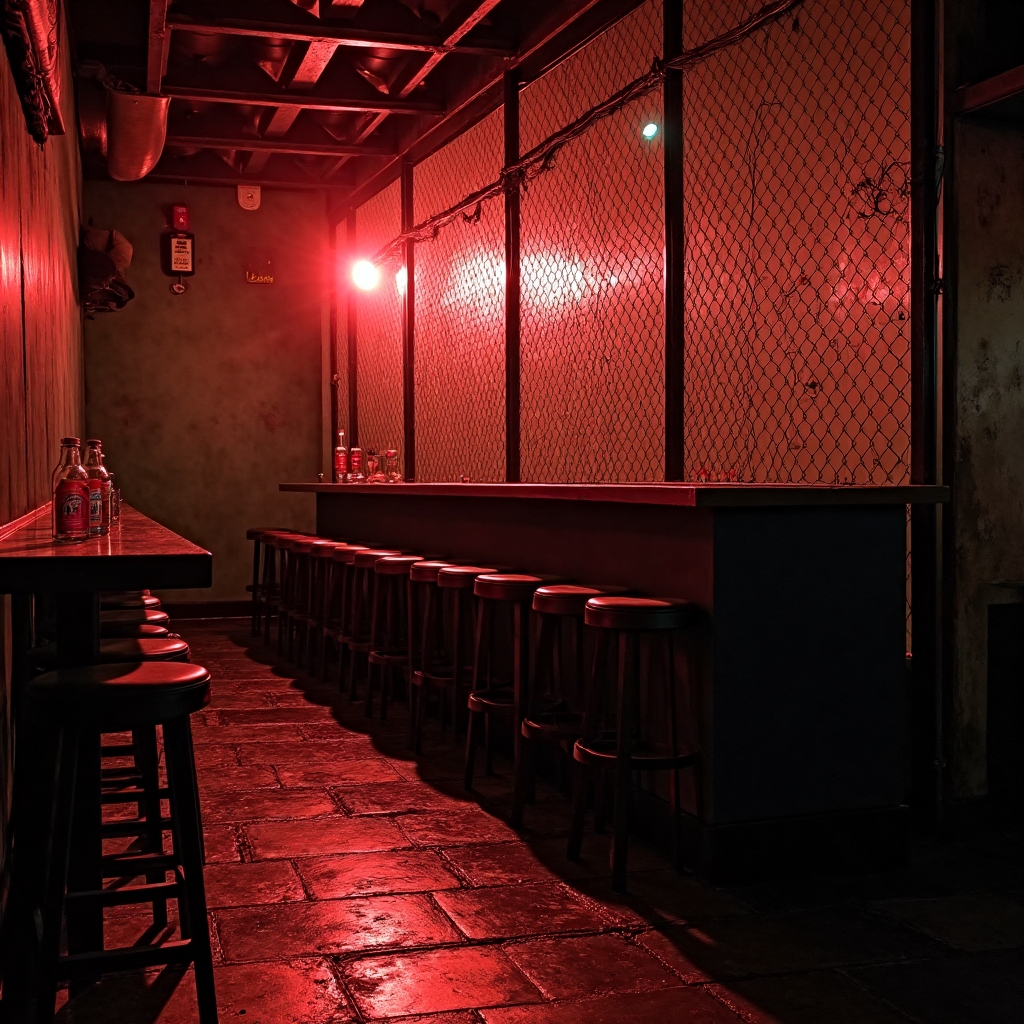
The Wire Remembered – Mythology In Motion
The chicken wire stage lives on in memory, myth, and artistic representation, shaping how we understand performance, danger, and coolness. It is remembered not just for its physical presence, but for the emotional architecture it created. Musicians, patrons, and staff recall the tension, the triumphs, and the transformations that occurred behind the mesh. The wire has become a symbol of earned experience, a visual shorthand for authenticity and survival. Its mythology continues to evolve, appearing in new songs, stories, and visual art. The stage setup may be rare today, but its emotional resonance remains strong. It reminds us that art often emerges from conflict, and that performance is a form of emotional labor. The chicken wire stage is not frozen in time—it moves through memory, shaping how we talk about grit and grace. It is a symbol of what it means to stand up, speak out, and survive the night. The wire is gone, but the myth remains.
- The chicken wire stage is remembered through emotion, not just structure.
- Its mythology shapes how we talk about performance and danger.
- Musicians recall it as a symbol of earned experience.
- Patrons remember the tension and spectacle it created.
- The wire appears in songs, stories, and visual art.
- Its emotional resonance continues across generations.
- The stage setup is rare, but the myth is active.
- The wire represents artistic labor and emotional risk.
- It moves through memory, not just history.
- The chicken wire stage remains a living symbol of survival.
Conclusion
The chicken wire stage is not just a memory—it is a living metaphor for the emotional, cultural, and symbolic weight of live performance. It framed musicians in moments of danger, defiance, and transformation, turning every gig into a test of presence and survival. From honky-tonks in Mississippi to punk bars in Berlin, the wire became a visual and emotional shorthand for coolness under pressure. It shaped how performers moved, how audiences reacted, and how venues built their identity. The mythology of the chicken wire stage continues to evolve, appearing in lyrics, photography, venue design, and oral history. It reminds us that art is often forged in conflict, and that performance is a form of emotional labor. The wire separated artist from audience, but also connected them through tension, risk, and shared experience. Its legacy is not confined to the past—it moves through memory, myth, and metaphor. The chicken wire stage remains a symbol of what it means to stand up, speak out, and survive the night. In every mesh of steel, there is a story waiting to be told.
Join The Discussion
Have you ever performed or witnessed a gig behind chicken wire? What does the image evoke for you—danger, defiance, or something deeper?
#ChickenWireStage #CoolnessUnderPressure #HonkyTonkMythology #PerformanceAndSurvival #BluesAndBarriers #LiveMusicLore #SymbolOfGrit #ArtUnderFire #RootsAndResistance #VenueIdentity
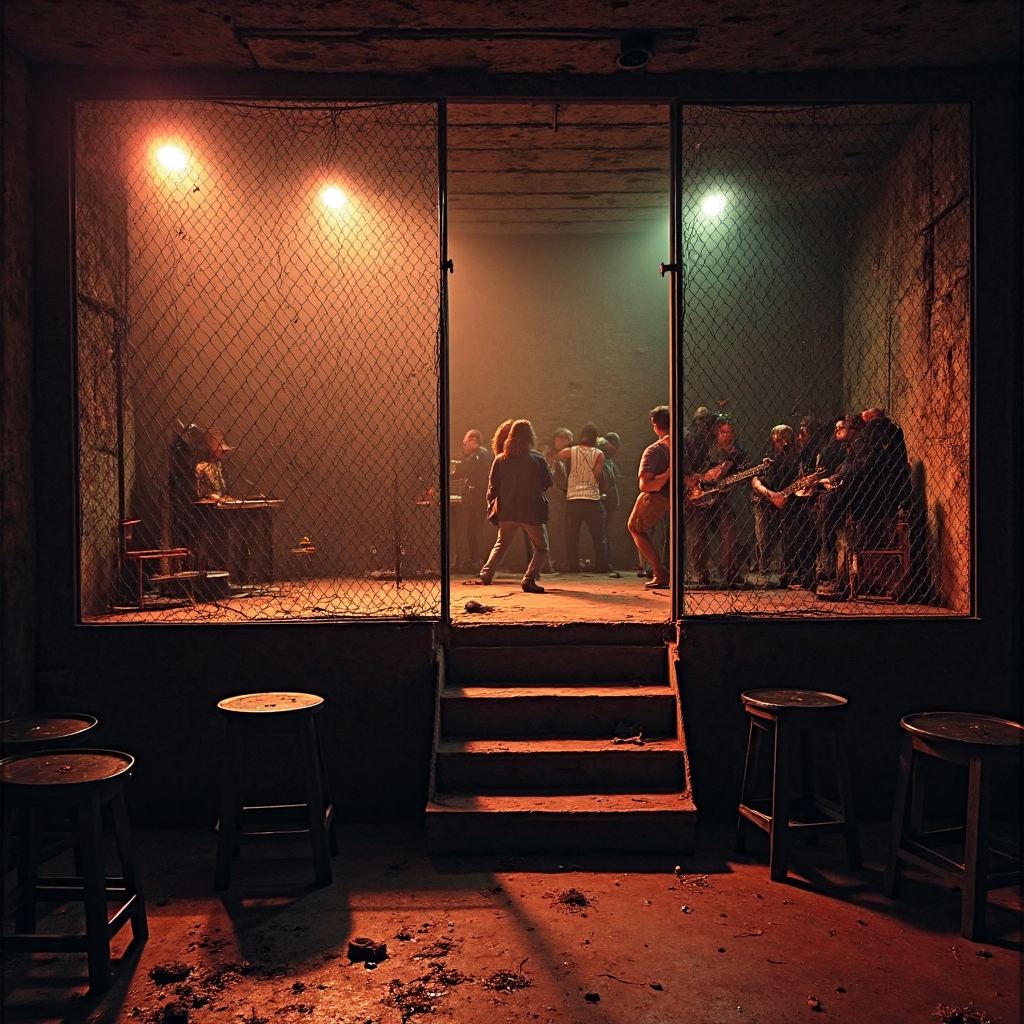
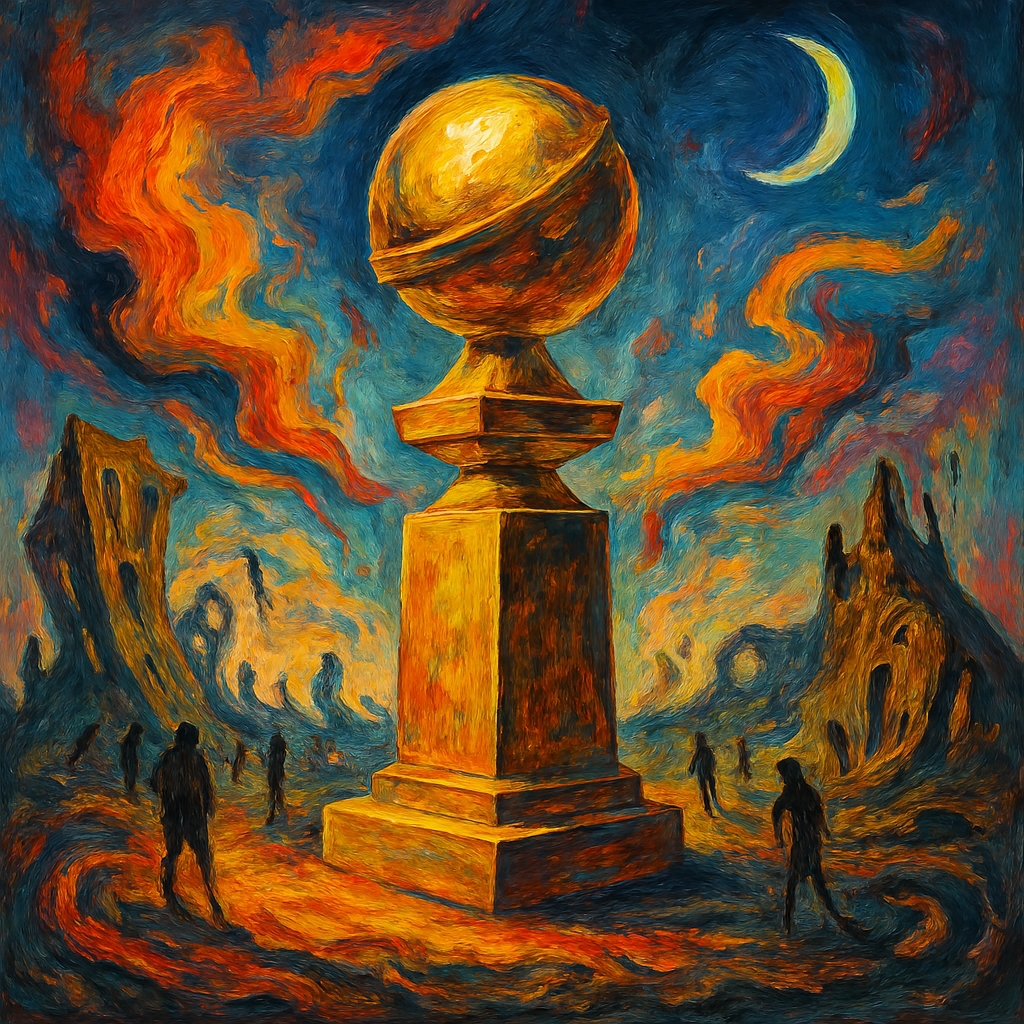
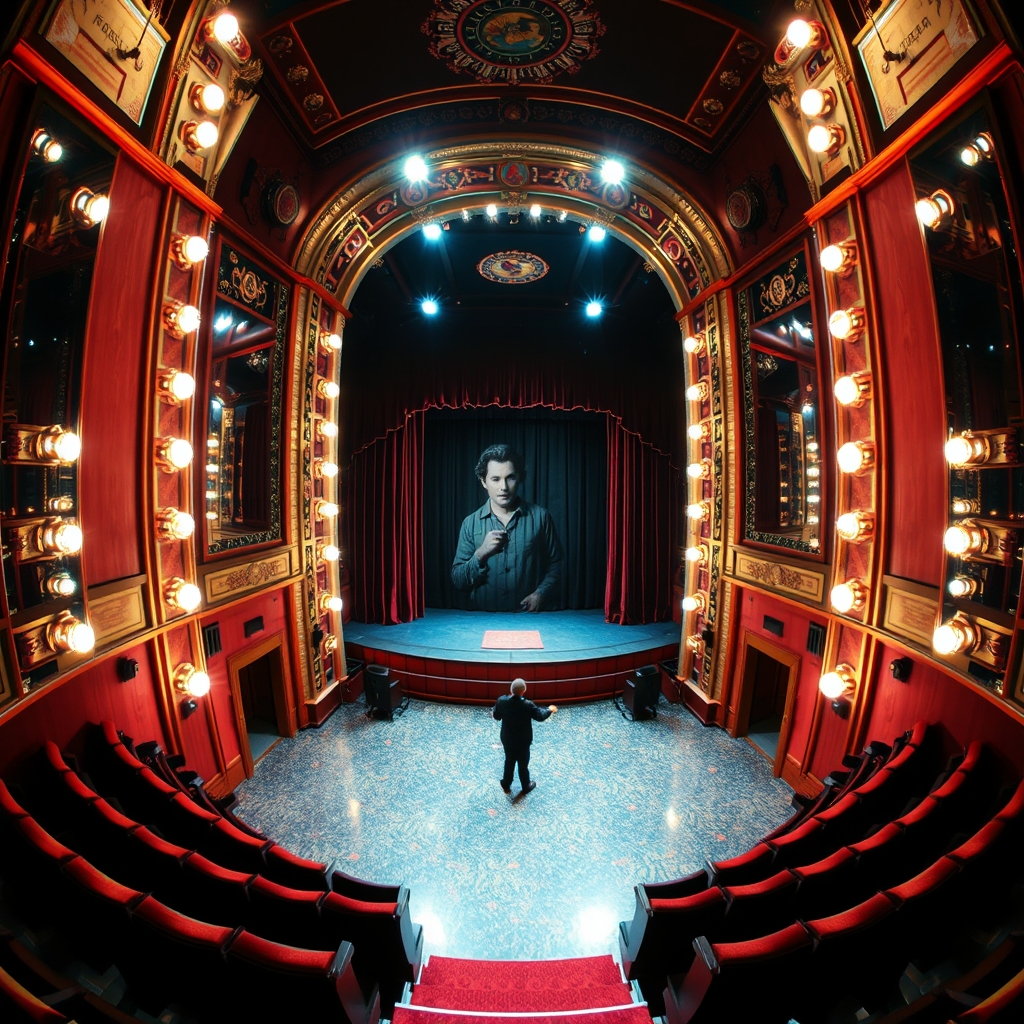







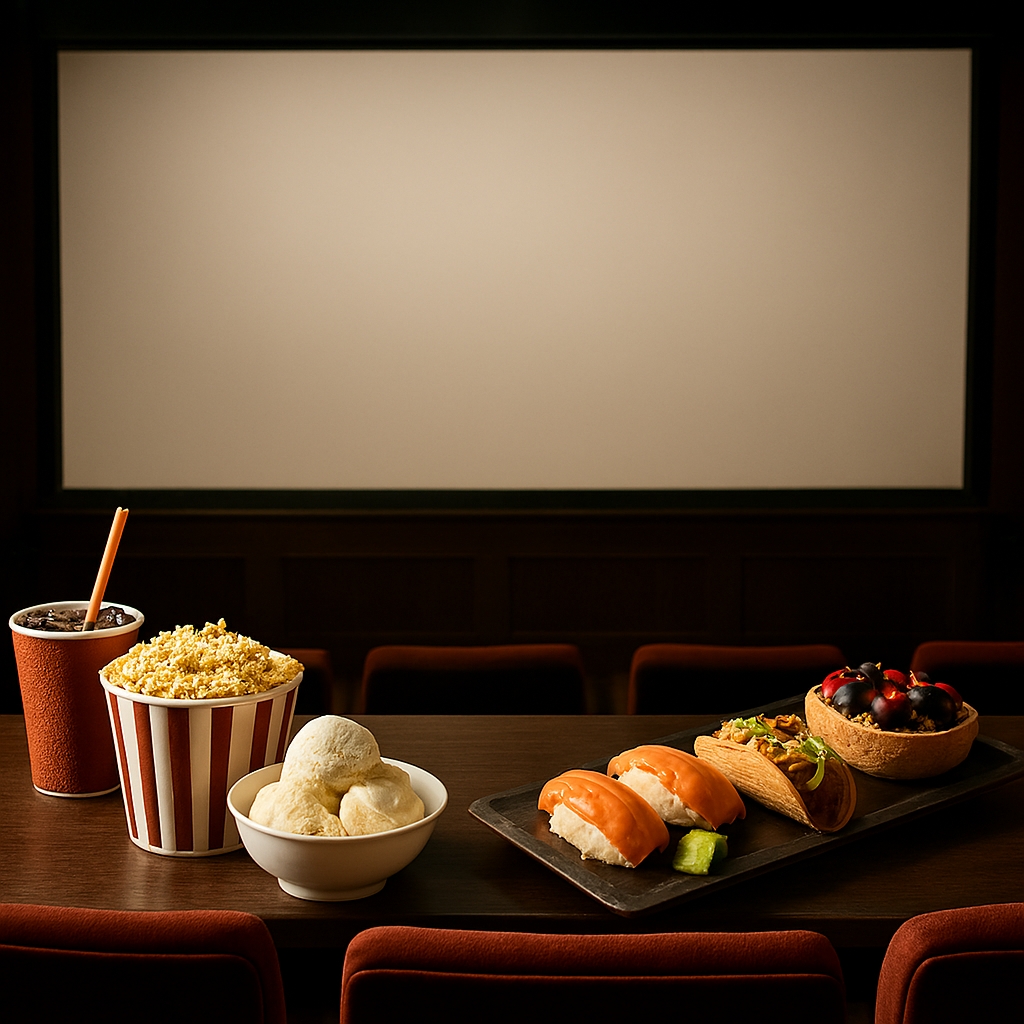

Leave a Reply